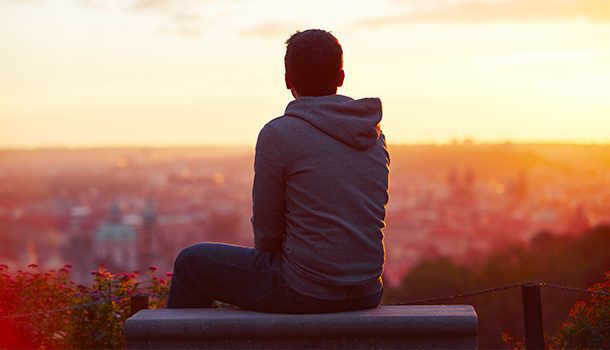Emerging paradigms of hope

As I write these thoughts, we collectively co-exist in the unsettling and unending chaos of COVID-19. This global, invisible enemy leaves illness and death in its seemingly indiscriminate wake, with little freedom of movement or from fear. Our collective and individual responses might depend on where we live (the geographic lottery), what natural supports we have (the birth and friendship lotteries), and perhaps, if we are able to draw from a well of inner strength (resilience).
Headlines count and recount the mass casualties of this virus. How many dead, how many infected, how many still unknown. We appear to be readying ourselves for a war against an enemy we cannot see, and those same headlines promote fear as the leading, affective response.
I think what we are feeling is grief, and it is as complex as the situation in which we find ourselves. Emerging commentaries – both popular and scholarly – lend credence to this observation.
When grief and loss fuse with global, historical moments, we collectively feel time. It is a somatic time, rather than an abstract container, or an intuition of the mere succession of events and things. These events bring on a collective anxiety, inflicting a lesion on entire communities – even countries. There is a profound feeling of loss, a sense that the world will never be the same, and that the future is uncertain or irrevocably changed. These events are universally experienced, and can be at once communal and uniting, as well as unique to a given individual. Perhaps their most obvious characteristic is the confrontation with mortality. Time is promised to no one, and the current crisis reminds us of this fact with disquieting and reverberating repetition.
In one of the great books of twentieth century sociology, Norbert Elias vehemently critiqued the way the western world approached death. The Loneliness of the Dying has never been more prescient. Published in 1985, but written some time before, it protested the separation of the dying in sanitized medical environments, away from familial and social supports. Perhaps in 2019, we could have read it as a masterpiece of historical sociology in the Weberian style. But the broad historical sweep has given way to COVID-19 protocols, loudly demanding just this separation. Now we confront our awareness of thousands of individuals completely isolated from the very support systems on which they desperately rely. And in a lottery of mortal peril from pestilence, a word itself which seemed to belong to history in the developed world.
The fear of death is always with us, however much we seek to avoid and evade it. Mortality has never been more salient. It refuses to maintain social distance, pervasive and saturating. Physical and biological metaphors explode into popular media consciousness. To heighten this unease, we cannot access some of the very distractions on which we usually rely. The screen refers to a decrease in new cases, green shoots of optimism. But we are equally aware of drive-through funerals attended by only one or two people, and healthcare workers with minimal protective apparatus.
There has been a loss of ritual. There have always been “grieving rules” (social rules), every bit as important in coping with grief and loss as individual and personal reactions. The latter never occur in a social vacuum. But that is just what is happening. Crowds at funerals, christenings, parties, beaches – communal association is an evil we can do without.
We are likely feeling some form of anticipatory grief as well. We are uncertain about the future, and while we cannot exactly pinpoint it, intrusive thoughts about something bad out there pervade. Despite the ubiquitous renderings of what the virus looks like, we cannot see it. It is an enemy without a face, but we broadly imagine how it could continue to portend changes we neither anticipate nor welcome. Our sense of safety – however misguided – has been broken. Kierkegaard’s “sickness unto death” is the new normal.
So from where might we draw hope? George Bonanno, a professor of Clinical Psychology at Columbia University suggests that resilience is wired in. “Recovery”, if that is the right word, is as recovery does. Some moments might be far more difficult than others. Those moments may catch us off guard – they may not follow a pattern – and they may find us a year after the loss itself. No matter, says Bonanno. This resilience and relative strength is, as he and others suggest, “typical.” We will get through this – ideally, together.
Ernest Becker argued that death and loss are our primordial source of energy. In the denial of death lay the triumph of humanity: its culture, its technology, its religion. That is how significance and meaning are won. That is how, he might argue, we will emerge from this morass with lessons learned, new protocols in place, a renewed sense of the preciousness of time, togetherness, and life itself.
We are seeing these emerging paradigms of hope despite an ever-shifting landscape. In Italy – even as the numbers of those affected reached unthinkable proportions – we saw people singing to each other from balconies of their homes in which they were mandated to self-quarantine. In New York City, known for its grit and resolute determination, we see examples of community building, virtual support groups, and organized support for its most disenfranchised and vulnerable residents. We are seeing the sharing of free apps for meditation and exercise classes. We see a rise in volunteerism: when the Governor of New York State asked for mental health and health care workers to volunteer time to assist those in need from the COVID crisis, over 82,000 people answered his call to be in service to others. We are reminded, as Viktor Frankl counseled in his classic work Man’s Search for Meaning, “Everything can be taken from a man but one thing: the last of the human freedoms – to choose one’s attitude in any given set of circumstances, to choose one’s own way.”
Grief, loss, and death are not simply a part of human culture – they bequeath human culture. But manage we do – every day, globally. Perhaps the world never will be the same. Perhaps, though, we can turn that sense of loss into creation of new rituals and sensibilities – into sustainable hope for the future. This too will pass. May what it teaches us, about what we can and should be, remain.
Written by Michele Forte, PhD
SUNY/Empire State College Faculty
Related Articles
UNYP Chronicle Newsletter
The e-mail address you provide will be used only to send you the newsletter. Your privacy is important to us.
For more information download our UNYP Brochure.

Contacts
University of New York in Prague
Londýnská 41, 120 00 Praha
ID no: 25676598
Phone:
+420 224 221 261
![]() Skype
Skype
Email: unyp@unyp.cz







